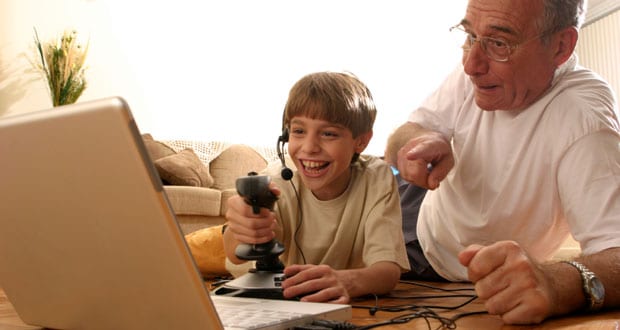Media Framing Analysis

David Giles, PhD
University of Winchester, UK
 In this paper I will outline three different strands of media psychology research that I am currently developing, and discuss each in relation to the future of the field in general.
In this paper I will outline three different strands of media psychology research that I am currently developing, and discuss each in relation to the future of the field in general.
A few years ago I attended a panel at the ICA annual conference on the topic of framing. The individual papers included large-scale quantitative content analyses of a month’s television, radio and press coverage of GM foods, as well as a discursive microanalysis of a single news item. The end of the conference was summed up by asking what the point was of the framing concept when it incorporated such diverse methods and theoretical positions.
 David Giles is a Senior Lecturer in Psychology at the University of Winchester, UK. His research interests focus on Media influence on behavior, particularly ‘parasocial’ relationships between audiences and media figures and celebrities, the ‘framing’ of health and environmental issues in the news media and consequent public understanding of these issues and behaviors, and the psychology of fame and celebrity.
David Giles is a Senior Lecturer in Psychology at the University of Winchester, UK. His research interests focus on Media influence on behavior, particularly ‘parasocial’ relationships between audiences and media figures and celebrities, the ‘framing’ of health and environmental issues in the news media and consequent public understanding of these issues and behaviors, and the psychology of fame and celebrity.
Other areas of interest include identity, the internet and mental health, musical taste, and psychological meanings of music. Giles is the founder, and co-editor, of Qualitative Research in Psychology and has reviewed numerous articles for scholarly journals, including the British Journal of Psychology, Human Communication Research, Media Psychology, Personality and Individual Differences, Journal of Applied Social Psychology, and the Journal of Social and Personal Relationships. He is the author of several books, including Media Psychology (2003) and journal articles. david.giles@winchester.ac.uk
Framing has a long history in the social sciences generally. We could identify strands of thought starting from Goffman’s (1974) concept of frames that define social situations; or from Tversky and Kahneman’s (1981) work on the design of positive or negative ‘message frames’ and their influence on decision-making; but most relevant to media psychology, I believe, is the work of Bransford and Johnson (1972), whose experiments demonstrated the increase in recall and comprehension when a picture is presented as a meaningful aid to understanding an otherwise disconnected set of sentences. This effect may well mimic the impact of visual images on the reader of a newspaper or website, or the viewer of a television news bulletin.
Rather than abandoning framing as a theoretical tool, therefore, I set out to try and formalize some kind of methodological structure that could incorporate diverse approaches to the study of the same set of media material. In conjunction with Rachel Shaw (Aston University, UK), we developed a set of analytic steps that could be used to conduct similar analyses. This procedure leaned heavily on the work of Entman (1991, 1993), who used a variety of quantitative and qualitative techniques to show how the US media framed two ostensibly similar plane crashes in the 1980s as either a deliberate act of aggression or a tragic accident, depending on who was doing the shooting, and who was flying the plane.
Entman specified four stages to his analysis: agency (who is doing what to whom), identification (with people in the stories), categorization (for example, the use of adjectives), and generalization (to other news stories, long-standing debates and so on). We added a fifth, narrative, because we believed that many persuasive media texts borrow heavily from formulaic styles of storytelling in the local culture and unravelling these should be a key component of the framing analysis. Also we extended the ‘agency’ stage to incorporate a study of ‘dramatis personae’ – effectively drawing up a cast list of the characters that populate the human drama unfolding in the various media.
We begun by applying our framing analysis to a substantive topic – the UK media treatment of aging and motherhood following a spate of stories in the British daily press (Shaw & Giles, in press). We identified a variety of different frames around the same stories generated by a medical conference, some in favor of older women giving birth, others sharply critical, and some that concealed a warning within an otherwise positive frame. Much depended on the choice of characters to tell the story – whether older mothers themselves, fertility experts, or the researchers – and to what extent they were allowed to speak for themselves.
Our methodology is far from perfect at present: we are presently applying it to media coverage of voluntary childlessness, a larger project over a longer period, incorporating more media (including the internet). We need to do some gradual tinkering with the stages, and how to apply them to different types of text, different genres and components of media. And ultimately we hope to start to explore the impact that these frames have on the audience, by studying the responses of groups of readers and viewers.
Parasocial interaction and celebrity worship
Several years ago I published a theoretical paper on the topic of parasocial interaction (Giles, 2002) that I hoped would ignite a spark of interest on this very important aspect of media psychology. It hasn’t. I guess it hasn’t for the same reasons the literature has developed in the restricted way I outlined in the paper: the reduction of parasocial interaction to a single measurable variable – ‘strength’ of interaction with a specific ‘favorite’ figure from a selected media genre. There’s not much you can do with such a measure apart from include it in a multivariate study as a predictor of some other outcome variable.
Much the same could be said about ‘celebrity worship’ another (apparently) univariate construct that has evolved since I wrote that paper, within a literature to which I have contributed personally on occasions (Giles & Maltby, 2004; Maltby, Giles, Barber & McCutcheon, 2005). Celebrity worship has emerged firmly within the psychological literature (rather than communication, where most of the parasocial research has been conducted), where the focus has been somewhat on the ‘pathological’ nature of over-involvement by celebrity fans.
As with the parasocial interaction scale (Levy, 1979; Rubin, Perse & Powell, 1985), the success of celebrity worship as a construct can perhaps be attributed to its psychometric properties: it has generated 26 papers in six years without really addressing some of the key underlying assumptions.
Firstly, is celebrity worship really a unitary phenomenon? Two dimensions emerge repeatedly throughout the literature: an ‘intense-personal’ factor that corresponds to the kind of private, indulgent obsessiveness that springs to mind when we think of the term ‘celebrity worship’; and a ‘social-entertainment’ factor whereby individuals join with others in order to ‘worship’ celebrities. This latter component sounds more like fandom, and I am currently working with Gayle Stever (Arizona State University) on a way of distinguishing fans from celebrity worshippers.
A second issue binds celebrity worship to parasocial interaction, by asking: what is the fundamental psychological mechanism by which one comes to worship a celebrity? There is no doubt in my mind that celebrity worship can never be more than a subset of parasocial interaction – it is just one of the types of relationship that can develop from the encounters that audiences have with media figures. Therefore I believe it is essential that we consider celebrity worship always within the context of parasocial phenomena more broadly.
And it is on this topic that I really want to devote the bulk of my research over the next few years – to fully develop a theory, and a methodology, that can allow us to understand parasocial interaction within the context of social psychology more generally. There has been, and will continue to be, resistance from those who object to the use of the term ‘relationship’ to cover non-reciprocated interaction, who feel that the parasocial concept fundamentally ‘pathologizes’ media fans (surely we are all included, even those of us who just have a personal opinion about the US president), that parasocial interaction only applies to television, and the behaviors a viewer engages in while the media figure is on screen…such limited conceptions I believe are no use to developing theory at all. These may reflect the way parasocial interaction has been defined before now: all the more reason to expand its remit.
At the moment, in conjunction with Charlotte de Backer (University of Leicester, UK) I am developing a questionnaire that taps into several elements of parasocial relationships: negative as well as positive; relationships with different types of media figures, real, fictional, human and nonhuman. Some very interesting findings are already emerging through pilot work. Another element we hope to explore is the role of anthropomorphism. This is a relatively new field of psychological research (Epley, Waytz & Caccioppo, 2007) but it has considerable potential for understanding human relationship psychology more generally, and particularly relationships that aren’t reciprocated – at least not in the traditional way – with animals, toys, imaginary friends, and so on.
Finally, parasocial theory cannot ignore the enormous importance of online interaction. Of course, ordinary text-based exchanges are not parasocial in the sense that they are reciprocated, but some interesting possibilities emerge where celebrities and other media figures have created their own websites, and enter into dialogue with fans. Sure, fans have always written letters to their heroes, and received dubious acknowledgement in return…but today’s websites break down that private/public distinction so that site members may all feel that their hero is communicating with them personally – or do they? Answers to these kinds of questions are essential for future theoretical development.
Finally, an important consideration in the next few years is that quantitative research alone may be incapable of answering some of the more important and interesting questions. If media psychology is to flourish we need to take qualitative research more seriously – and this requires a commitment from editors, funding bodies, and scholars alike.
Internet communities
My final research strand concerns the internet more broadly, a field that generates more research every year, most of it scarcely falling within the boundaries of media psychology. This was always inevitable, once the technology got going: for some the internet is not a medium at all but a phenomenon in its own right. Of course it is vitally important that we can hang on to the internet as a central topic in media psychology because it is impossible to study it in a historical and cultural vacuum: it refers back to so many theories and arguments long advanced in communication and media studies. Indeed, it offers a more compelling illustration of some of those theories – if ever a technology fulfilled Marshal McLuhan’s definition of a medium, it is the Internet.
My own research in this area has been largely confined to the impact of the internet for the future of mental health. I first became interested in this topic when investigating media influences on eating disorders, and became aware of the extraordinary phenomenon of pro-ana websites – sites developed for and by people with anorexia and bulimia, devoted not to discussions about how to ‘treat,’ or recover from, such conditions, but to espousing the positive features of having an eating disorder. The discipline required to lose weight; the ‘purity’ associated with the anorexic state. At times these sites bordered on a celebration of anorexia as a lifestyle, a term hotly disputed by some sites, embraced by others.
My research on the pro-ana web community (Giles, 2006; Brotsky & Giles, 2007) has tried to explain the phenomenon in relation to traditional social psychological theory – largely social identity. I explored the creation of ingroups and outgroups within the discussion forums on the websites and looked at the language used to reject ‘outsiders’ and attempt to develop a coherent philosophy about what anorexia actually means. Ingroups and outgroups are critical to the construction of a community, to preserve a sense of belongingness – and in these websites it is essential that members conform to a unified code, so that ‘haters’ and other hostile interlopers can be kept at bay. But what that ‘code’ is, and how to identify it, is not an easy task.
The pro-ana community is not alone. Throughout cyberspace similar communities have grown up around different types of mental health condition. Self-harm has its own similar set of issues (Whitlock, Powers & Eckenrode, 2006). The biggest community, perhaps, is devoted to Asperger’s syndrome and the autistic spectrum in general. Countless new sub-syndromes are invented, it seems, every month in this community: are you a ‘deep diver’ or instead, perhaps, you fit the criteria for ‘scanner’? (see Giles, 2007).
A vital question becomes: how will this affect mental health services in future? If new syndromes are emerging as fast as fashion tribes in the 1970s, psychologists need to keep up! My next step here is to chart the emergence of these communities, exploring their impact on young people in particular, the sweetshop of different identities available online, and how this affects their construction of mental illness itself.
Right now perhaps, DSM-V is being written, online, by the very individuals it describes.
References
Bransford, J.D., & Johnson, M.K. (1972). Contextual prerequisites for understanding: Some investigations of comprehension and recall. Journal of Verbal Learning and Verbal Behavior, 11, 717-726.
Brotsky, S.R., & Giles, D.C. (2007). Inside the “pro-ana” community: A covert online participant observation. Eating Disorders: The Journal of Treatment and Prevention, 19, 93-109.
Entman, R.M. (1991). Framing U.S. coverage of international news: Contrasts in narratives of the KAL and Iran Air incidents. Journal of Communication, 41, 6-27.
Entman, R. (1993). Framing: Toward clarification of a fractured paradigm. Journal of Communication, 43, 51-58.
Epley, N., Waytz, A., & Cacioppo, J.T. (2007). On seeing human: A three-factor theory of anthropomorphism. Psychological Review, 114, 864-886.
Giles, D.C. (2002). Parasocial interaction: A review of the literature and a model for future research. Media Psychology, 4, 279-302.
Giles, D.C. & Maltby, J. (2004). The role of media in adolescent development: Relations between autonomy, attachment, and interest in celebrities. Personality and Individual Differences, 36, 813-822.
Giles, D.C. (2006). Constructing identities in cyberspace: The case of eating disorders. British Journal of Social Psychology, 45, 463-477.
Giles, D.C. (2007). The internet, information seeking and identity. The Psychologist, 20, 432-435.
Goffman, E. (1974). Frame analysis. New York: Harper and Row.
Levy, M. R. (1979). Watching TV news as para-social interaction. Journal of Broadcasting, 23, 69–80.
Maltby, J., Giles, D.C., Barber, L. & McCutcheon, L.E. (2005). Intense-personal celebrity worship and body image: Evidence of a link among female adolescents. British Journal of Health Psychology, 10, 17-32.
Rubin, A.M., Perse, E.M., & Powell, R.A. (1985). Loneliness, parasocial interaction, and local television news viewing. Human Communication Research, 12, 155-80.
Shaw, R.L., & Giles, D.C. (in press). Motherhood on ice? A media framing analysis of older mothers in the UK news. Psychology & Health.
Tversky, A., & Kahneman, D. (1981). The framing of decisions and the psychology of choice. Science, 211, 453-458.
Whitlock, J.L., Powers, J.L., & Eckenrode, J. (2006). The virtual cutting edge: The internet and adolescent self-injury. Developmental Psychology, 42, 407-417.



